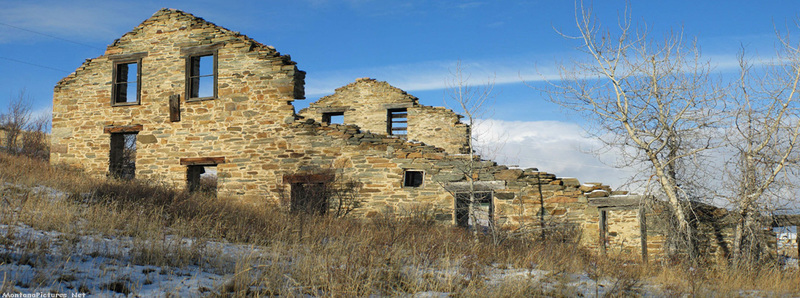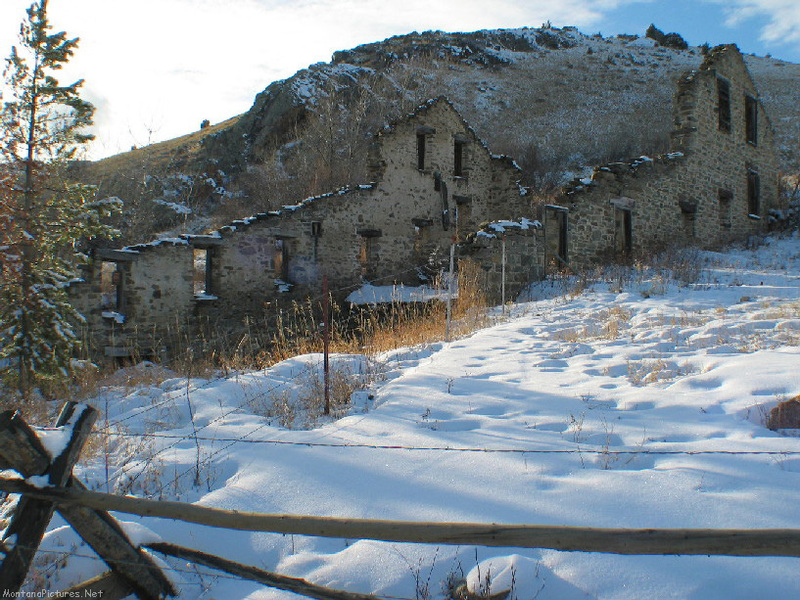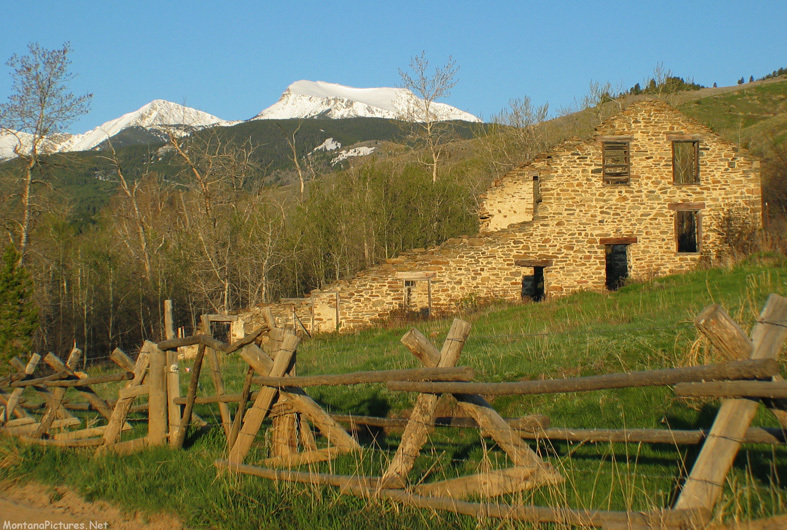
Two coarse rubble stone walls, wooden walls extending above and beyond the stone walls at the rear, and a wooden roof housed this twenty-stamp gold mill built in 1883. Henry Elling (1848-1900) and William W. Morris (1840-1904) were the mill’s original owners. Each of the mill’s twenty stamps probably weighed between 500 and 750 pounds. Lifted in sequence by a camshaft, the giant stamps crushed gold-bearing quartz into fine sand. The quartz came from Pony-area mines, including the Boss Tweed, the Keystone, and the Clipper. Once crushed, the ore was placed on one of the mill’s four Frue vanners. New technology in 1884, Frue vanners combined a shaking rubber belt with water jets to wash away “gangue” (worthless rock) while leaving the heavier gold-containing particles. The gold-containing particles were then shipped approximately sixty miles north to a smelter at Wickes, where giant roasting furnaces finished the process of isolating the gold. Once the largest operating concentrator in Pony, the mill ran periodically from 1884 until approximately 1926. Today only the east and west walls remain.
Images


